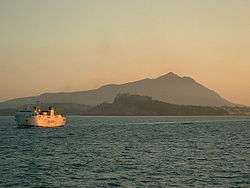Phlegraean Islands

The Phlegraean Islands (Italian: Isole Flegree [ˈiːzole fleˈɡrɛːe]) are an archipelago in southern Italy, and comprise the islands of Ischia, Procida, Vivara, and Nisida, to which Capri is sometimes added.
The islands, situated in the Gulf of Naples, namely Ischia, Procida, Vivara and Nisida, are also known as the Phlegraean islands, a name that derives from the common affiliation to the geologic area of the Phlegraean Fields. The island of Capri, which is also situated in the gulf in Naples, is usually not included as one of the islands in the arcipelago flegreo, as it does not belong to the geologic area of Phlegraea.
The Phlegraean Islands and Capri are known in fact by the name of the archipelago they form part of (Parthenopaean or Neapolitan); they are less often called the Parthenopaean Islands, a term that derives from an earlier usage Ponziane or Pontine before the creation of the province of Latina, and still earlier when they belonged to the province of Naples). Nonetheless, the term remained in use as a description of the political regions, e.g., the Constitution of 1970 requires the province of Latina to meet in Latium.
In the classical epoch, the Phlegraean Islands were called Pithecussae (from Greek: Πιθηκοῦσαι Pithekousai) "islands of the monkeys." The myth, of Greek origin, tells of two brigands, the Cercopes of Ephesus, who played pranks on Zeus, who then punished them by turning them into monkeys and exiling them to the islands of Aenaria (Ischia) and Prochyta (Procida).
Legend had the monster Typhon buried under Ischia, and the Giant Mimas buried under Procida. Such stories might be significant as a clue to how the ancient Greeks attempted to account for the volcanism of the whole area. The resulting changes in the topography of the islands were due to the frequent intervention of deities.
Coordinates: 40°45′N 14°1′E / 40.750°N 14.017°E
| Wikimedia Commons has media related to Campanian Archipelago. |